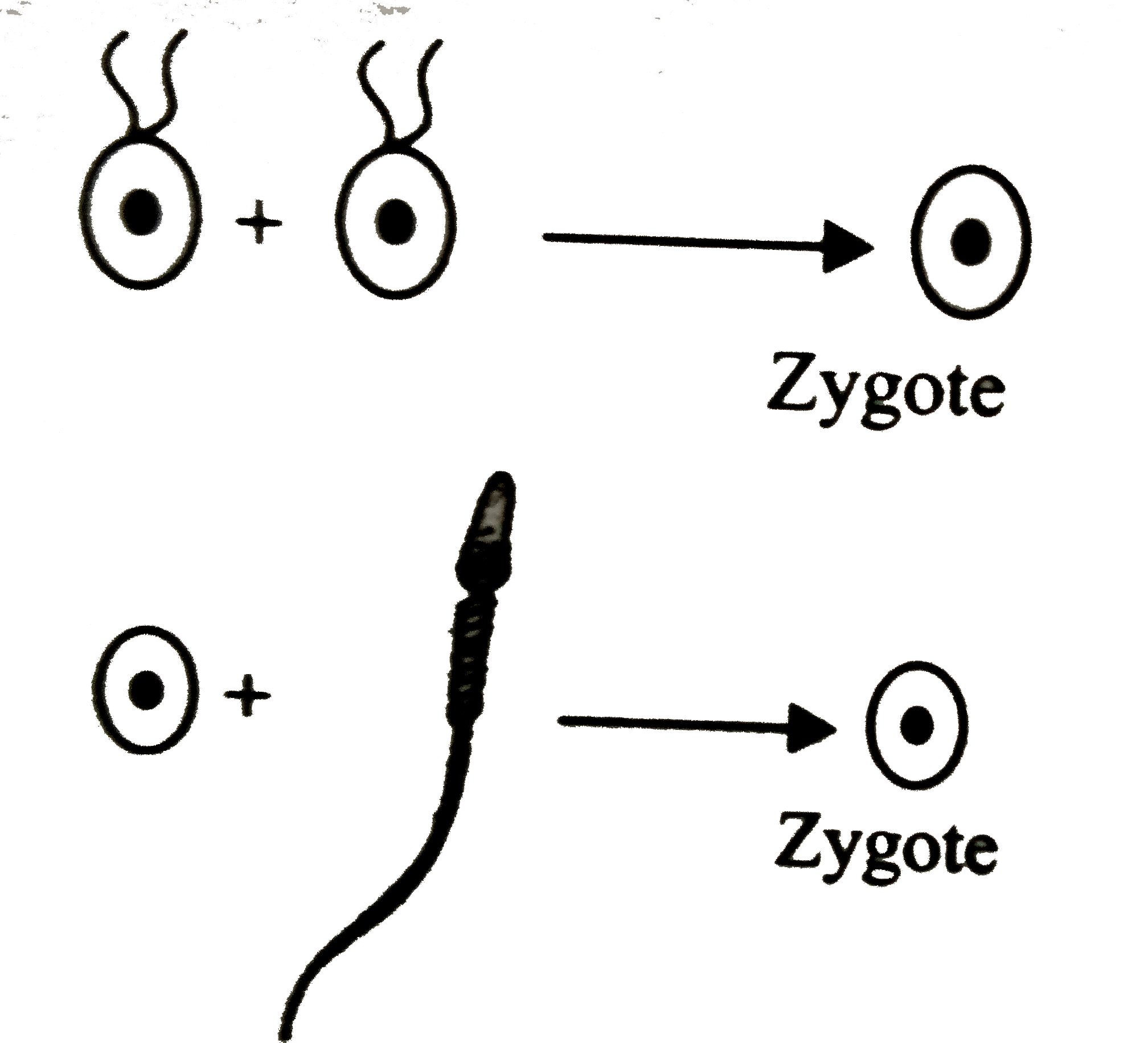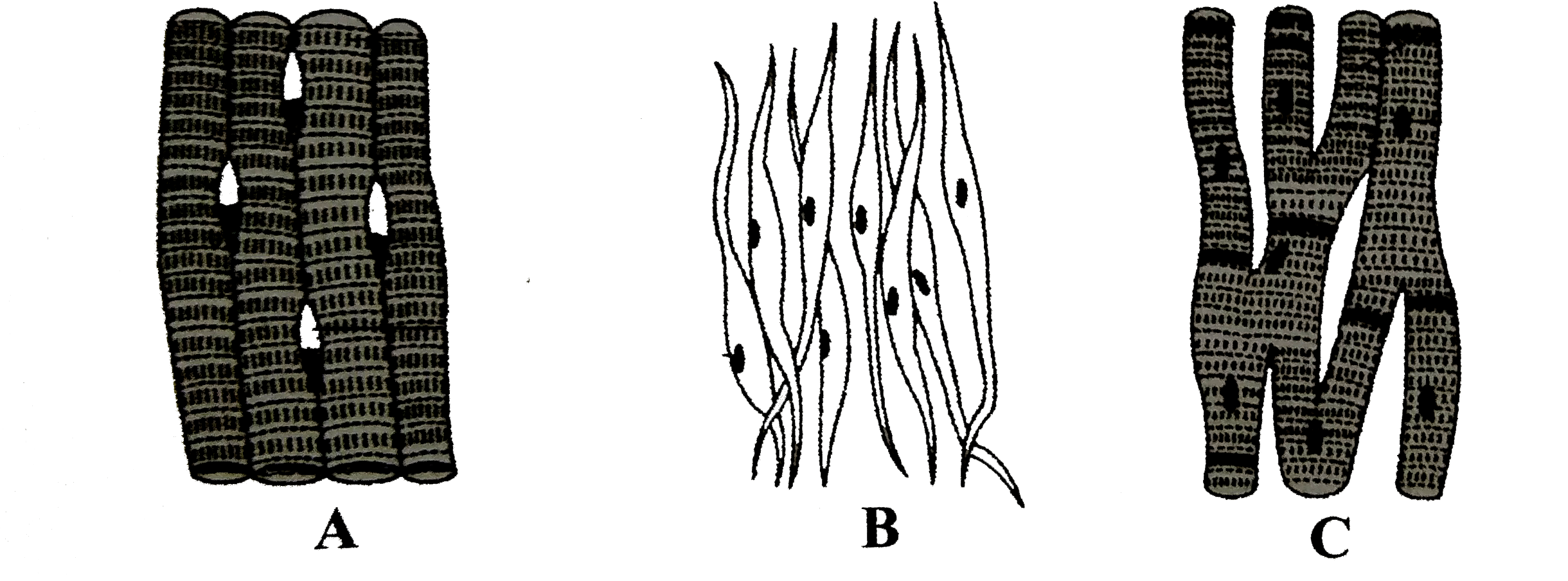Refer to the given diagrams showing different types of syngamy and select the option that gives correct example of each of these.

A
B
C
D
Video Solution
Text Solution
The correct Answer is:d
Syngamy is the complete and permanent fusion of male and female gametes to form the zygote. In Cladophora reproduction is isogamous. Isogamy, shown in figure (i) involves the fusion of gametes which do not differ morphologically but may be different physiologically. Such gametes are called isogametes. In humans, anisogamy is observed which involves fusion of gametes that differ in size or motility, as seen in figure (ii) The common type of anisogamy is oogamy, which involves fusion of large immotile female gamete and small motile male gamete.
|
Updated on:21/07/2023
Topper's Solved these Questions
Similar Questions
Knowledge Check
- Question 1 - Select One
Identify the figures A,B,C showing different types of muscle and select the correct option
 A A B CSmooth muscle Striated muscle Cardiac muscleB A B CCardiac muscle Smooth muscle Striated muscleC A B CStriated muscle Smooth muscle Cardiac muscleD A B CInvoluntary muscle Voluntary muscle Heart muscle
A A B CSmooth muscle Striated muscle Cardiac muscleB A B CCardiac muscle Smooth muscle Striated muscleC A B CStriated muscle Smooth muscle Cardiac muscleD A B CInvoluntary muscle Voluntary muscle Heart muscle - Question 2 - Select One
Refer to the given figures which show three different types of fission. Select the option which correctly matches them with the organism is which they occur.
 A i ii iiiEuglenaPlasmodiumAmoebaB i ii iiiPlasmodiumParameciumEuglenaC i ii iiiEuglenaParameciumEscherichiaD i ii iiiEuglenaParameciumAmoeba
A i ii iiiEuglenaPlasmodiumAmoebaB i ii iiiPlasmodiumParameciumEuglenaC i ii iiiEuglenaParameciumEscherichiaD i ii iiiEuglenaParameciumAmoeba - Question 3 - Select One
Refer to the given figure and select the correct match.
 AA-Fungal colony, B-Bacterial colonyBA-Viral colony, B-Bacterial colonyCA-Bacterial colony, B-Viral colonyDA-Bacterial colony, B-Fungal colony
AA-Fungal colony, B-Bacterial colonyBA-Viral colony, B-Bacterial colonyCA-Bacterial colony, B-Viral colonyDA-Bacterial colony, B-Fungal colony
Identify the following diagram and select the option with correct labels :
 View Solution
View SolutionRefer to the given figures and answer

Identify the given stages of mitosis and select the correct optionView SolutionThe given figure shows some types fo inflorescences. Select the option that correctly identifies them.
 View Solution
View SolutionRefer to the given cross section of a C4 leaf and select the incorrect option.
 View Solution
View SolutionRefer to the given table and select the option that correctly fills the blanks in it.
 View Solution
View Solution


